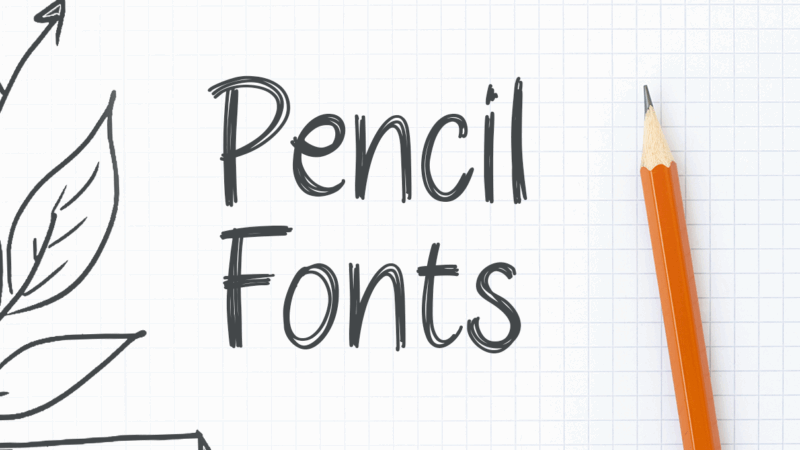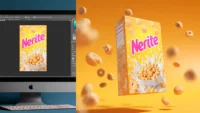In this article:
- The Most Expressive Pencil Fonts of 2025
- What Makes a Font Look "Pencil-Written"?
- Where to Use Pencil Fonts
- Where to Avoid Pencil Fonts
- How to Select the Perfect Pencil Font
- Expert Tips for Working with Pencil Fonts
- The Evolution of Pencil Typography: From Analog to Digital
- Expert Opinions: Typography Designers on Pencil Fonts
- Conclusion: The Lasting Appeal of Pencil Typography
As designers, we’re constantly seeking ways to add that personal touch to our work—something that feels genuine, handcrafted, and warm. And in 2025, pencil fonts are making a huge comeback, bringing with them an authentic, sketched quality that digital perfection simply can’t replicate.
Pencil fonts are exactly what they sound like—typefaces that mimic the organic, slightly imperfect strokes of handwritten pencil. They carry that distinctive texture and character that instantly makes any design feel more human and approachable.
In this comprehensive guide, I’ll dive deep into the world of pencil fonts and explore:
- The qualities that make a great pencil font
- How to select the perfect pencil font for your project
- The best situations to use (and avoid) pencil fonts
- My top 35 pencil fonts for 2025
- Expert tips for working with pencil typography
- And much more!
Let’s sharpen our design tools and get started!
The Most Expressive Pencil Fonts of 2025
Not all pencil fonts are created equal. Some capture the light, sketchy quality of a 2H pencil, while others embody the bold, rich texture of a 6B. Here’s my curated list of the most expressive pencil fonts that are making waves in 2025:
Sketchy
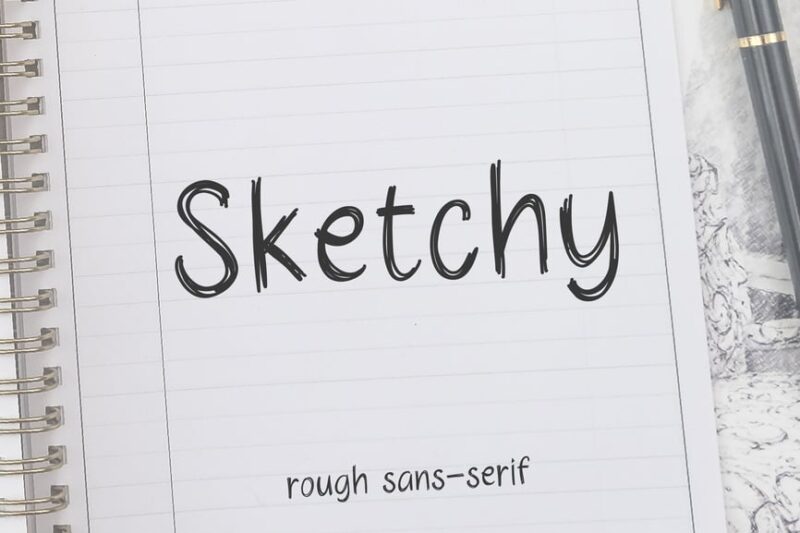
Sketchy is a rough sketch font that captures the essence of hand-drawn designs. Its imperfect lines and natural variations make it perfect for projects requiring a raw, artistic feel. This sans-serif typeface is ideal for creating a casual, approachable aesthetic in various design applications.
Sketching Universe
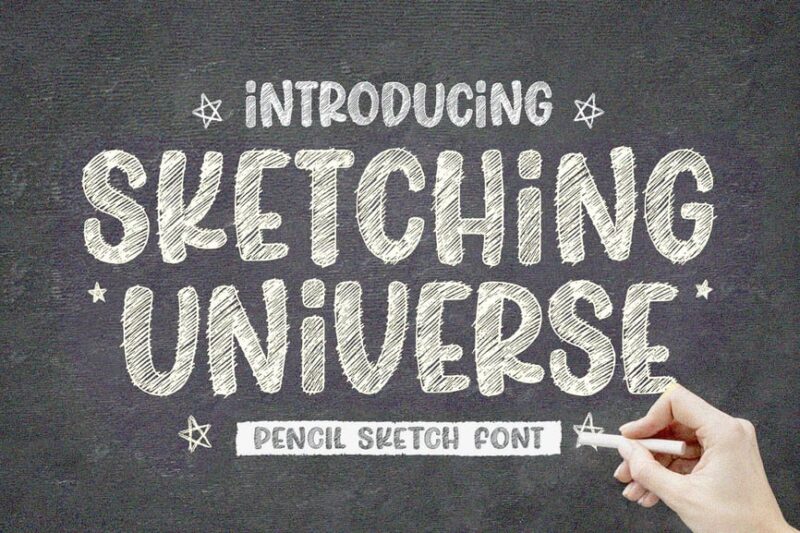
Sketching Universe is a versatile pencil sketch font family that includes serif, sans-serif, script, and handwritten styles. This comprehensive set offers designers a wide range of options for creating authentic hand-drawn looks. The inclusion of symbols and decorative elements makes it a powerful tool for diverse design projects.

Get 300+ Fonts for FREE
Enter your email to download our 100% free "Font Lover's Bundle". For commercial & personal use. No royalties. No fees. No attribution. 100% free to use anywhere.
Penhead
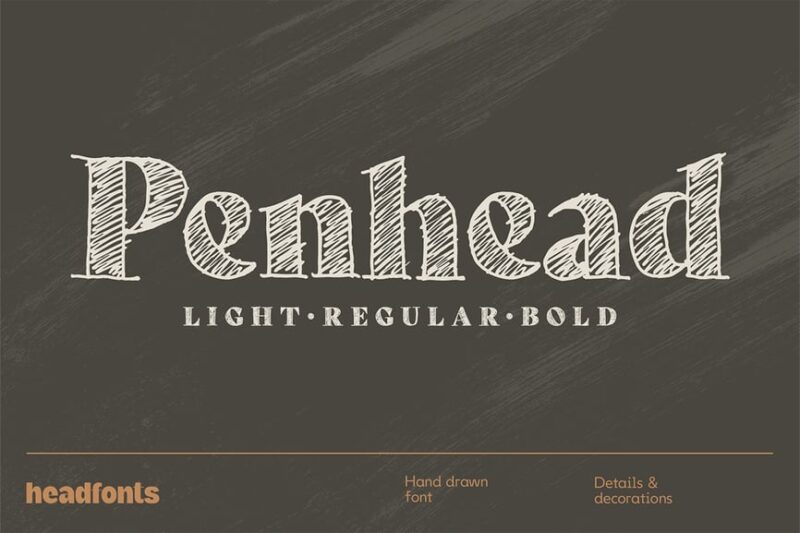
Penhead is a serif pencil sketch font that exudes a loose, organic feel. Its decorative nature makes it suitable for headlines, posters, and branding projects that require a handcrafted touch. The font’s imperfections add character and authenticity to designs, making them stand out in a digital world.
The Best Pencil
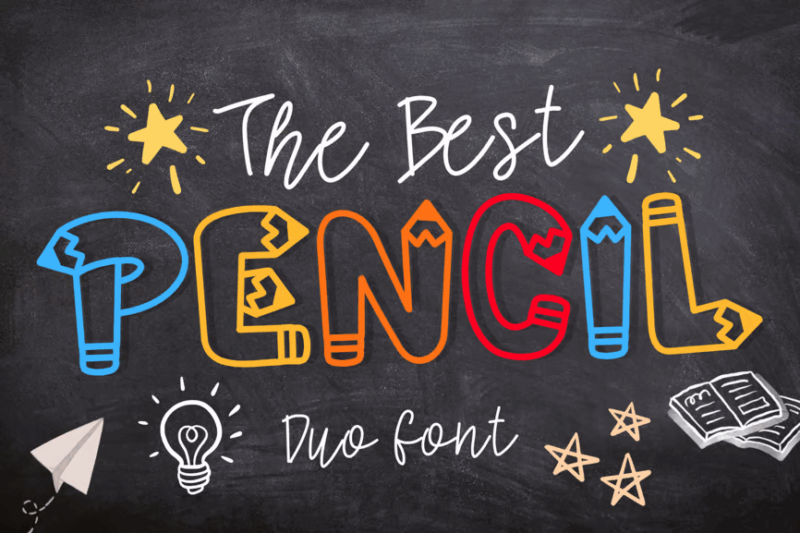
The Best Pencil is a script and handwritten font that captures the essence of natural pencil strokes. Its decorative quality makes it perfect for creating handwritten-style designs with a touch of authenticity. This font is ideal for projects that require a personal, artistic touch, such as invitations, packaging, or brand identities.
Rimstone Laroe
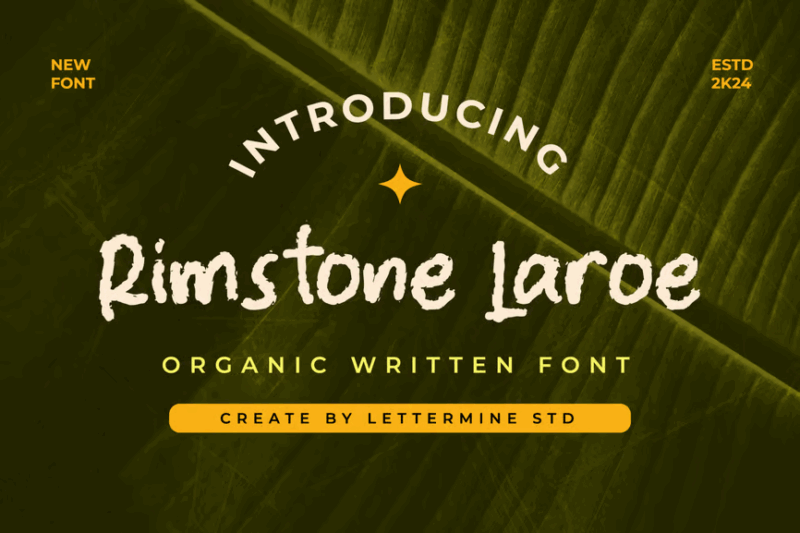
Rimstone Laroe is a pencil monoline font with an organic, flowing quality. Its script and handwritten style make it perfect for creating elegant, natural-looking designs. This typeface is well-suited for projects that require a delicate touch, such as wedding invitations, beauty product packaging, or sophisticated branding materials.
Crayole
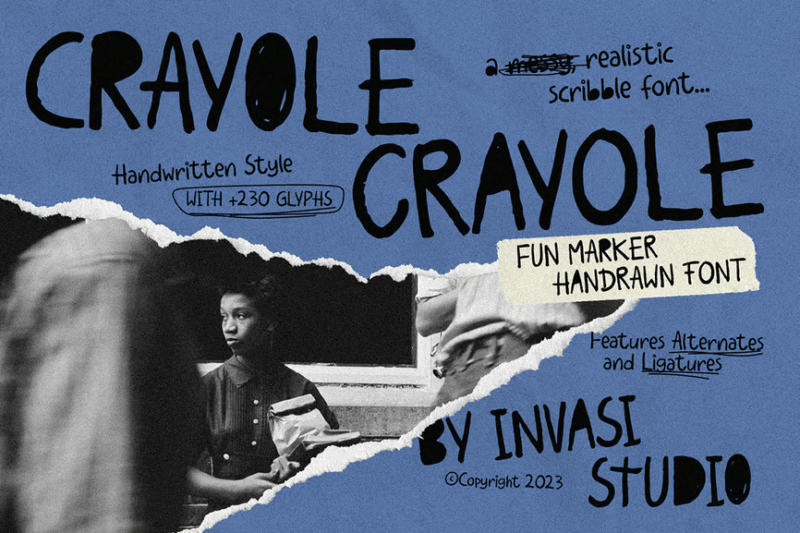
Crayole is a playful, scribble-style handwritten font that brings a touch of whimsy to any design. Its carefree appearance makes it perfect for children’s products, casual branding, or any project that aims to convey a sense of fun and spontaneity. The font’s unique character can help designs stand out in a crowded marketplace.
SA Yesenin
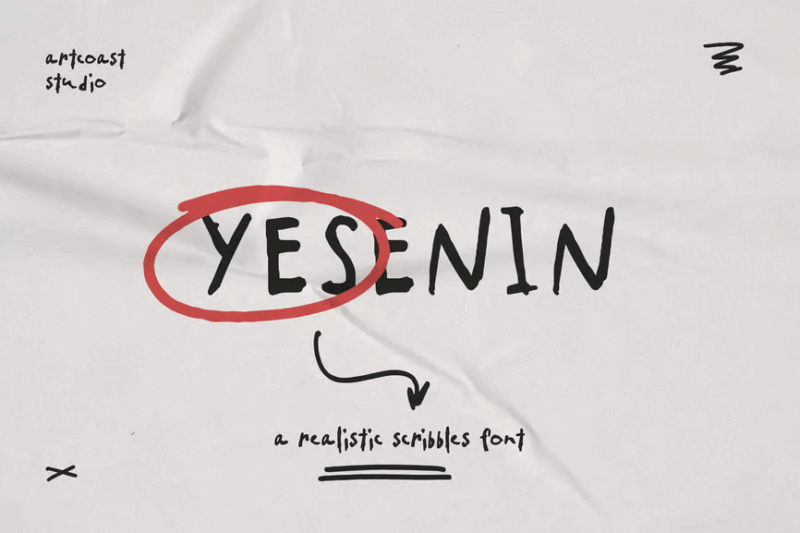
SA Yesenin is a realistic scribbles font that combines sans-serif structure with handwritten flair. This versatile typeface offers a unique blend of readability and artistic expression. It’s ideal for creating designs that require a balance between professionalism and creativity, such as magazine layouts or modern branding projects.
Letter Sketch
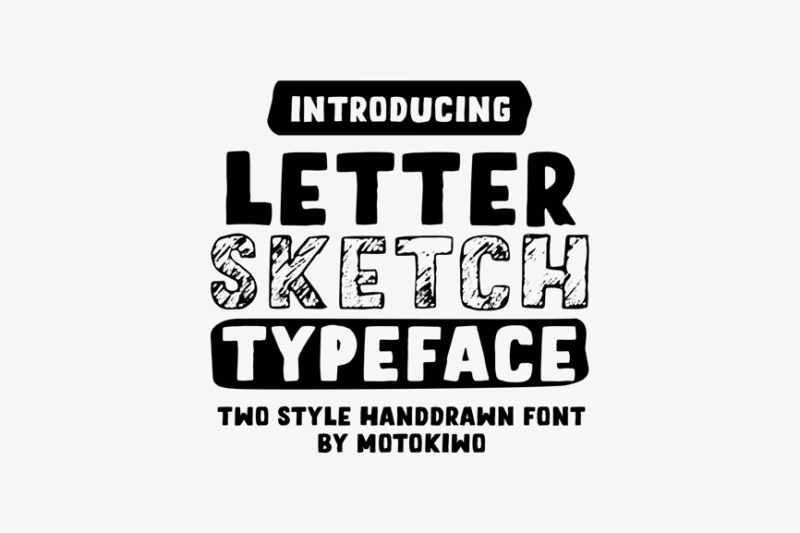
Letter Sketch is a handdrawn typeface that combines script, handwritten, and sans-serif styles. Its versatility makes it suitable for a wide range of design applications, from logo design to editorial layouts. The font’s hand-lettered quality adds a personal touch to designs, making them feel more authentic and approachable.
Handwritten Font for Quotes
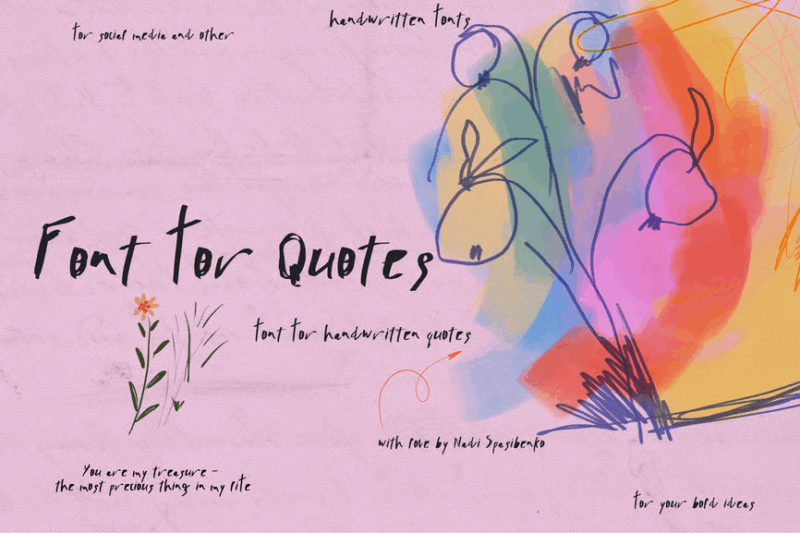
This handwritten font is specifically designed for creating impactful quotes and statements. Its natural flow and authentic appearance make it perfect for social media graphics, inspirational posters, or any design that features prominently displayed text. The font’s personality helps to emphasize the emotional impact of the words it conveys.
Scribble Font
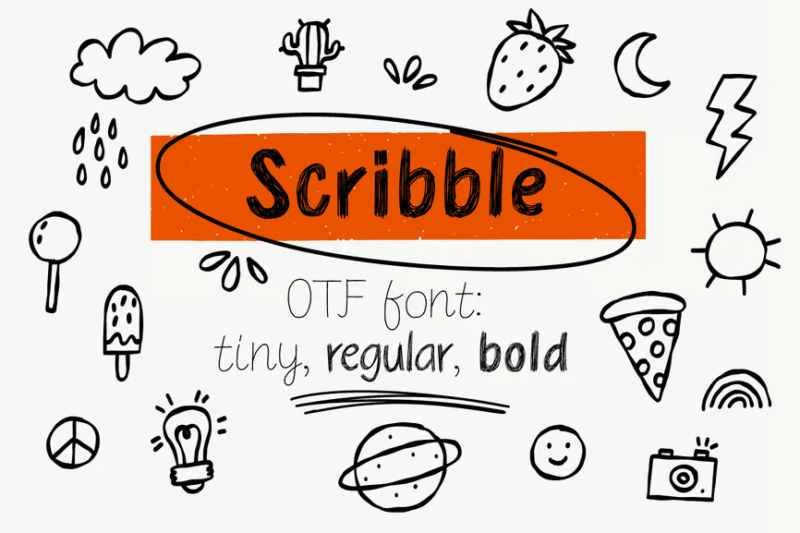
Scribble Font is a playful, doodle-style typeface that brings a sense of spontaneity to designs. Its casual, energetic appearance makes it ideal for youth-oriented brands, creative projects, or any design that aims to convey a sense of fun and informality. This font can help inject personality into otherwise conventional layouts.
Chalk Times
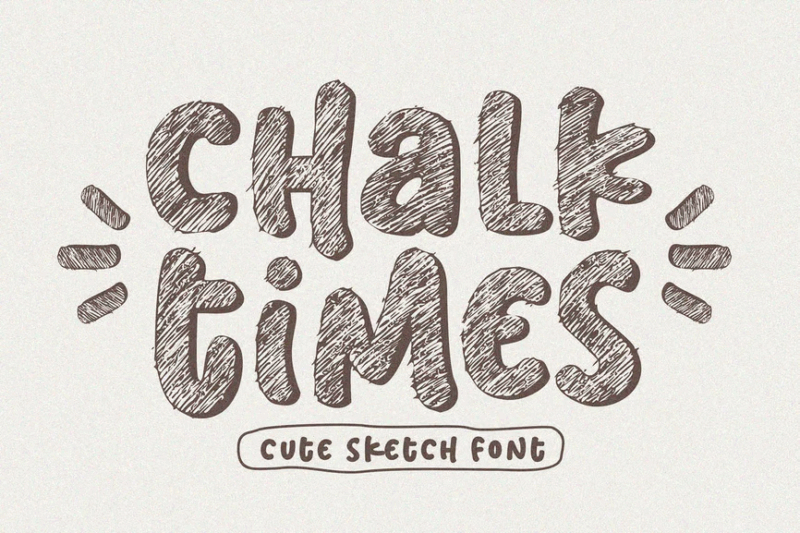
Chalk Times is a comprehensive sketch font family that mimics the appearance of chalk writing. Offering sans-serif, serif, script, and decorative styles, it’s perfect for education-related designs, menu boards, or any project requiring a schoolhouse aesthetic. The included symbols enhance its versatility for creating cohesive chalk-style designs.
Handodle
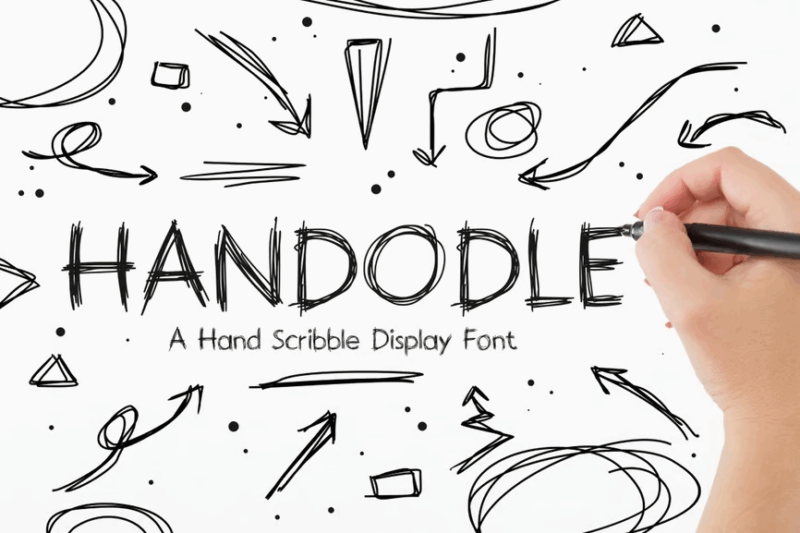
Handodle is a hand-scribbled display font that brings a unique, artistic flair to designs. Its expressive character makes it ideal for creating distinctive logotypes, headlines, or artistic compositions. This font can help brands stand out by adding a touch of creativity and personality to their visual identity.
Wondeur
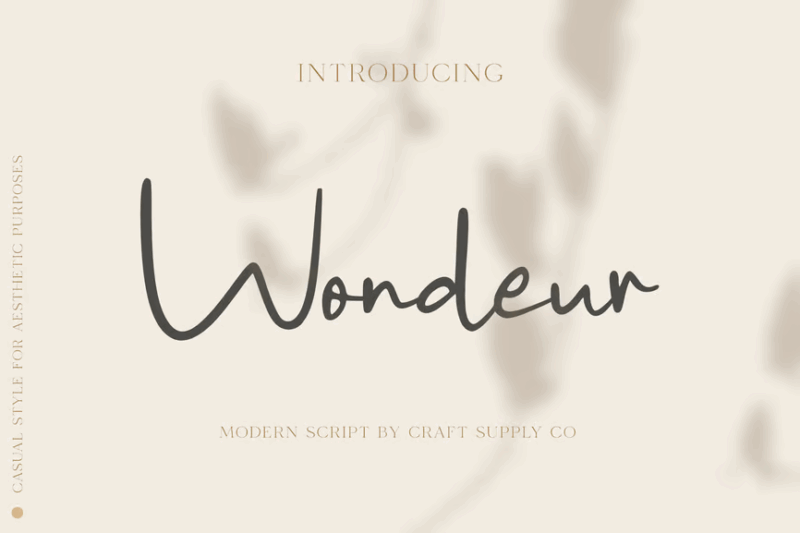
Wondeur is a modern script font that combines elegance with a contemporary twist. Its flowing lines and subtle imperfections create a chic, handwritten appearance. This font is perfect for fashion brands, beauty products, or any design that requires a touch of sophistication and personal flair.
Audys
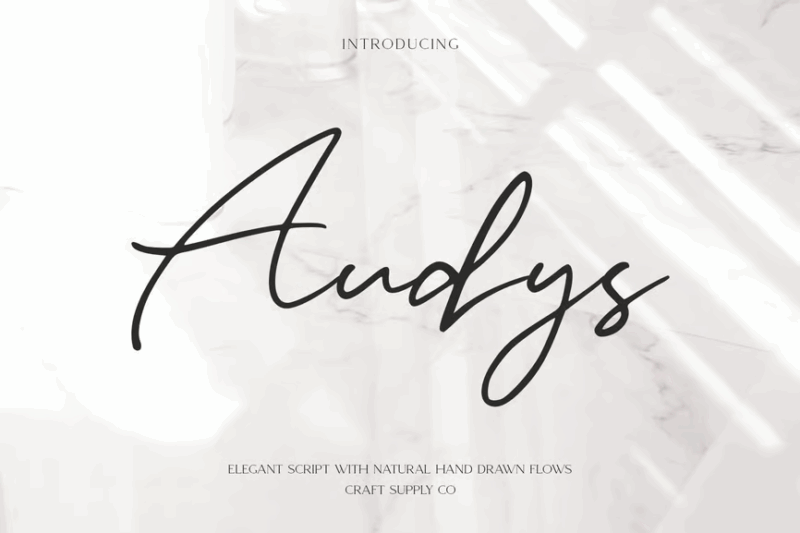
Audys is an elegant script font that exudes sophistication and grace. Its refined curves and smooth connections make it ideal for high-end branding, wedding stationery, or luxury product packaging. This font can elevate designs by adding a touch of class and timeless beauty.
Street Graphite
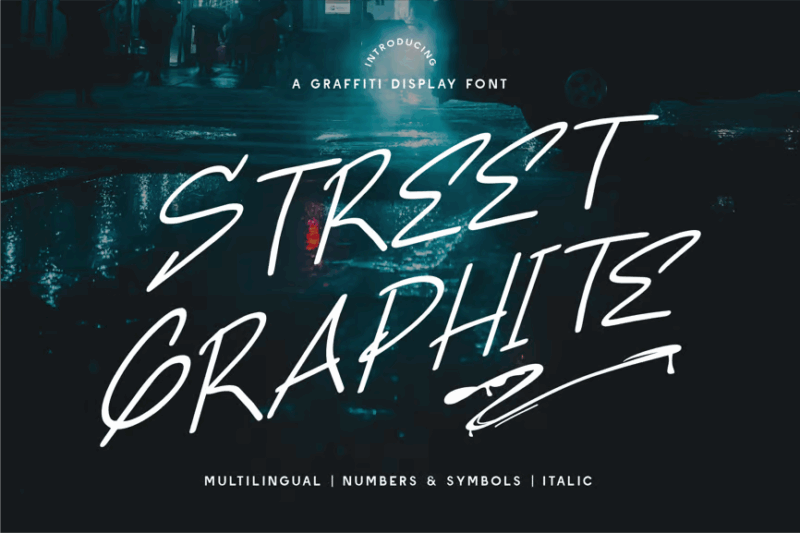
Street Graphite is a tagging graffiti font that captures the raw energy of street art. Its spray paint-inspired design makes it perfect for urban-themed projects, music album covers, or any design that aims to convey a rebellious, edgy vibe. This font can add authenticity to designs inspired by street culture.
Washington Ink Pen
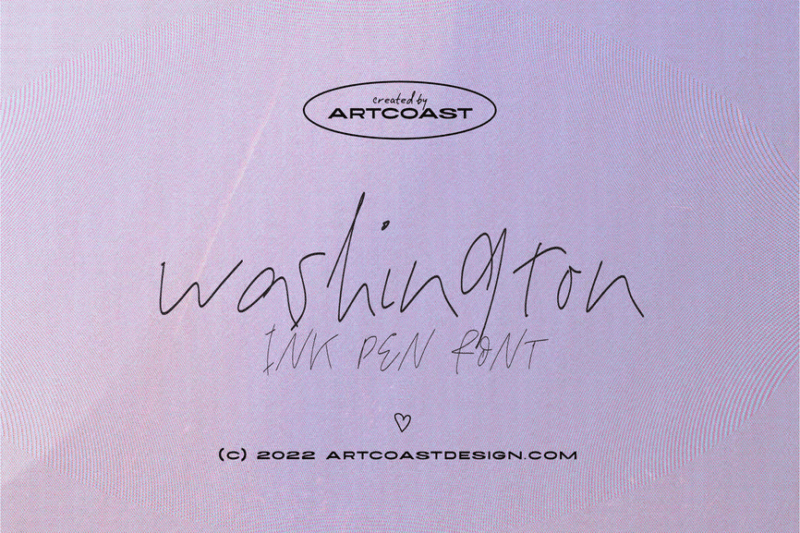
Washington Ink Pen is a handwritten font that mimics the flow of ink on paper. Its natural variations and subtle imperfections create an authentic signature-like appearance. This font is ideal for creating personalized designs, such as hand-signed documents, custom stationery, or brand elements that require a personal touch.
What Makes a Font Look “Pencil-Written”?
What exactly gives pencil fonts their distinctive, handcrafted feel? Several key characteristics work together to create that authentic pencil-on-paper look:
Natural Texture and Grain
Real pencil marks have a distinctive texture—graphite particles catch on the tiny ridges of paper, creating areas of heavier and lighter deposit. Great pencil fonts replicate this texture, with subtle variations in opacity and slight graininess along the edges of letterforms.
Inconsistent Pressure
When writing with a pencil, natural hand movements create variations in pressure, resulting in lines that range from light and wispy to bold and defined. Quality pencil fonts incorporate these pressure changes into their design, giving each character a dynamic, organic appearance.
Slight Wobble and Imperfection
Unlike mechanical digital fonts, handwritten pencil letters rarely sit perfectly on the baseline or maintain exact proportions. The best pencil fonts embrace these imperfections with slight variations in character height, subtle baseline shifts, and natural inconsistencies in letter shapes.
Realistic Stroke Endings
Pencil marks have characteristic beginnings and endings—tapering where the pencil first touches or lifts from the paper, sometimes with tiny “hooks” where the direction changes quickly. Authentic pencil fonts pay careful attention to these details, creating convincing stroke terminals.
Overlapping Strokes
In real pencil writing, strokes often overlap as the hand moves across the page, creating slightly darker areas where lines cross. Thoughtfully designed pencil fonts incorporate these natural overlaps, particularly in script styles or in letters with crossing elements like ‘t’ and ‘f’.
These elements combine to create the warmth and authenticity that make pencil fonts so appealing. When selecting a pencil font, look for these characteristics to ensure you’re getting a truly convincing handcrafted look.
Where to Use Pencil Fonts
Pencil fonts bring a unique character to design projects, but they shine particularly brightly in certain applications. Here are some ideal uses for these handcrafted typefaces:
Storybook Illustrations
Children’s books and illustrated stories benefit tremendously from the warm, approachable feel of pencil fonts. They add a whimsical, handcrafted quality that complements illustrations and makes text feel like a natural extension of the artwork.
Artisanal Branding
Handmade products, craft businesses, and artisanal brands can enhance their authentic appeal with pencil typography. These fonts reinforce the message that care and human touch are central to the brand identity.
Creative Portfolios
Artists, illustrators, and designers can use pencil fonts to add personality to their portfolios, signaling creativity while maintaining readability. They work particularly well for section headers or pull quotes that deserve extra emphasis.
Educational Materials
Worksheets, creative writing prompts, and educational resources feel more inviting and less clinical when set in pencil fonts. They create a comforting connection to the familiar experience of learning through handwriting.
Personal Correspondence
Digital notes, cards, and personal emails gain warmth and sincerity when composed in pencil fonts. They bridge the gap between convenience and the thoughtfulness of a handwritten note.
Sketch-Style Websites
Websites with a sketch aesthetic or handcrafted vibe can use pencil fonts to maintain design consistency. They’re particularly effective for blog headings, menu items, or callout text on creative websites.
In these contexts, pencil fonts don’t just serve a functional purpose—they actively contribute to the emotional resonance and conceptual integrity of the design.
Where to Avoid Pencil Fonts
While pencil fonts bring charm and personality to many projects, there are certain contexts where their use might undermine your design goals:
Formal Corporate Communications
Annual reports, legal documents, and formal business correspondence require a level of professionalism and clarity that pencil fonts typically don’t convey. Stick with clean serifs or sans-serifs that project stability and authority.
Small Body Text
The textural details that make pencil fonts special can reduce readability at small sizes. For lengthy body text, especially in print, opt for more traditional typefaces and save pencil fonts for headings or callouts.
High-Tech or Luxury Brands
Unless specifically aiming for contrast, cutting-edge technology companies or luxury brands often benefit from typefaces that convey precision and refinement rather than the casual, handmade quality of pencil fonts.
Emergency Information
Warning signs, safety instructions, or any critical information that needs to be quickly and clearly understood should never be set in decorative pencil fonts. Clarity and legibility must take precedence over style.
Navigation Elements
Website menus, app buttons, and other navigational elements typically need maximum clarity and consistency. The natural variations in pencil fonts can sometimes compromise usability in these contexts.
Remember, even the most beautiful pencil font is only effective when it serves your overall design goals and audience needs. Always prioritize function alongside form when making typographic choices.
How to Select the Perfect Pencil Font
Choosing the right pencil font involves more than just picking something that looks handwritten. Here’s a thoughtful approach to finding the perfect match for your project:
Consider the Emotional Tone
Pencil fonts vary widely in their emotional resonance. Some feel playful and childlike, others artistic and expressive, while some convey a more technical, architectural quality. Identify the specific emotion you want to evoke before making your selection.
Evaluate the “Pencil Type”
Just as real pencils range from hard (H) to soft (B) with varying stroke characteristics, pencil fonts can mimic different drawing tools. Some capture the light, precise lines of a hard pencil, while others replicate the bold, grainy quality of softer leads. Choose one that matches your conceptual needs.
Check Legibility at Your Target Size
The textural details that make pencil fonts special can sometimes compromise readability, especially at smaller sizes. Always test your chosen font at the exact size you’ll be using to ensure it remains legible.
Assess the Character Set
Many pencil fonts focus on creating beautiful basic letters but may lack comprehensive character sets. If you need special characters, accents, or alternate glyphs, verify that your chosen font includes them before committing.
Consider Pairing Potential
Think about how your pencil font will work alongside other typefaces in your design. The best pairings often create contrast—a structured sans-serif for body text can be beautifully complemented by a pencil font for headings.
Evaluate Technical Quality
Not all pencil fonts are created equal from a technical standpoint. Look for proper kerning, consistent baseline behavior, and well-considered spacing. High-quality pencil fonts maintain their handcrafted appearance without sacrificing professional implementation.
By taking these factors into account, you’ll be better equipped to select a pencil font that not only looks beautiful but also serves your specific design needs and communicates effectively with your audience.
Expert Tips for Working with Pencil Fonts
Once you’ve selected the perfect pencil font, these professional techniques will help you get the most impact from your typographic choices:
Embrace Scale Contrast
Pencil fonts often shine at larger sizes where their textural details become more apparent. Don’t be afraid to create dramatic scale contrasts between your pencil typography and other elements to draw attention to key messages.
Mind Your Spacing
The irregular nature of pencil fonts sometimes requires adjustments to default spacing. Pay special attention to kerning pairs that might look awkward, and consider increasing leading slightly to give the letters room to “breathe.”
Use Color Thoughtfully
While plain graphite gray is an obvious choice for pencil fonts, don’t feel limited to monochrome. Colored pencil effects can be achieved by using muted, slightly desaturated hues that maintain the authentic feel while adding visual interest.
Consider the Background
Pencil fonts often look most authentic on textured backgrounds that mimic paper. Consider subtle paper textures or warm off-white backgrounds to enhance the handcrafted illusion.
Combine with Hand-Drawn Elements
Maximize the impact of your pencil typography by pairing it with complementary hand-drawn illustrations, icons, or borders. This creates a cohesive design language that reinforces the handcrafted aesthetic.
Maintain Contrast for Readability
Because pencil fonts often have variable stroke weights and textures, ensure sufficient contrast between your text and background. What works for bold display fonts might not provide adequate readability for pencil typography.
Consider Multiple Weights
If your chosen pencil font family includes multiple weights, use them to create hierarchy within your design while maintaining a consistent handcrafted feel throughout.
These techniques will help you leverage the unique qualities of pencil fonts while ensuring your typography remains effective and professional, even as it captures that authentic hand-drawn charm.
The Evolution of Pencil Typography: From Analog to Digital
The journey of pencil typography from actual hand-lettering to today’s sophisticated digital fonts represents a fascinating evolution in design history.
Traditionally, achieving the pencil-written look meant actually creating lettering by hand—a time-consuming process that required considerable skill. Design studios would employ specialists who could produce consistent hand-lettering for specific projects, or designers would create one-off lettering that would then be photographed or scanned for reproduction.
The early digital era saw crude attempts to replicate the pencil aesthetic, but these fonts often looked obviously computerized, lacking the subtle variations and authentic textures of real handwriting. As technology advanced, however, so did the sophistication of pencil fonts.
Modern pencil fonts are created through various techniques. Some designers start with genuine hand-lettering, carefully drawing each character with real pencils before digitizing and refining the results. Others use pressure-sensitive tablets to capture the natural variances in stroke weight and texture. The most advanced approaches employ sophisticated algorithms that simulate the physics of pencil on paper, creating variations in opacity, texture, and stroke character.
Today’s pencil fonts benefit from technical innovations like OpenType features, which allow for multiple variations of the same character to be included in a single font. This variable character set means that repeated letters don’t look identical—just as they wouldn’t in real handwriting—creating a much more authentic effect.
This evolution continues as designers find new ways to capture the warmth and personality of hand-drawn lettering in increasingly sophisticated digital tools, ensuring that the authentic pencil aesthetic remains relevant even in our highly digital design landscape.
Expert Opinions: Typography Designers on Pencil Fonts
I reached out to several leading typography designers to get their professional insights on the enduring appeal and effective use of pencil fonts. Their perspectives offer valuable guidance for designers looking to incorporate these characterful typefaces into their work.
Emily Chen, Independent Type Designer, observes: “What makes a great pencil font isn’t just the surface texture—it’s understanding the physics of how a hand moves when writing with a pencil. The best examples capture those subtle pressure changes, the way strokes taper at the beginning and end, and the natural rhythm of handwriting. It’s about balancing authenticity with usability.”
David Martinez, Creative Director at TypeCraft Studio, notes: “Pencil fonts fill a crucial emotional niche in modern design. As our world becomes increasingly digital, these fonts provide a counterbalance—they bring humanity and imperfection to our screens. I’ve seen brands completely transform their connection with audiences simply by swapping a sterile sans-serif for a thoughtfully chosen pencil font.”
Sarah Johnson, Typography Professor at Design University, emphasizes: “Context is everything with pencil fonts. What works brilliantly for a children’s book cover would be completely inappropriate for financial documents. Students need to develop a nuanced understanding of where the handcrafted aesthetic adds value versus where it might undermine credibility or readability.”
These experts agree that pencil fonts are much more than just a stylistic choice—they’re communication tools that carry significant emotional and psychological impact. When used thoughtfully, they can transform the way audiences perceive and connect with design.
Conclusion: The Lasting Appeal of Pencil Typography
In our increasingly digital world, there’s something profoundly refreshing about designs that capture the authentic, imperfect nature of human handiwork. Pencil fonts offer exactly this quality—a bridge between the efficiency of digital typography and the warmth of handcrafted lettering.
From their subtle textural variations to their natural stroke dynamics, these fonts bring an irreplaceable human touch to everything from storybooks to brand identities. They remind us that behind every design is a human creator, complete with all the beautiful imperfections that implies.
As we’ve explored throughout this article, pencil fonts are versatile tools in the designer’s arsenal—when chosen thoughtfully and used in appropriate contexts, they can elevate projects from merely functional to genuinely touching. They speak to our innate connection to handwriting and hand-drawing, experiences that are deeply embedded in our relationship with communication.
Whether you’re creating a children’s book that needs to feel friendly and approachable, or developing a brand identity that emphasizes craftsmanship and attention to detail, the right pencil font can be transformative. It can set a tone, evoke an emotion, and create an immediate connection with your audience.
So next time you’re selecting typography for a project, consider whether the authentic charm of a pencil font might be just what you need to make your design not just seen, but felt. After all, in design as in life, it’s often the human touches that leave the most lasting impressions.
Which pencil font is your favorite? Have you used these fonts in your own work? I’d love to hear about your experiences in the comments below!

